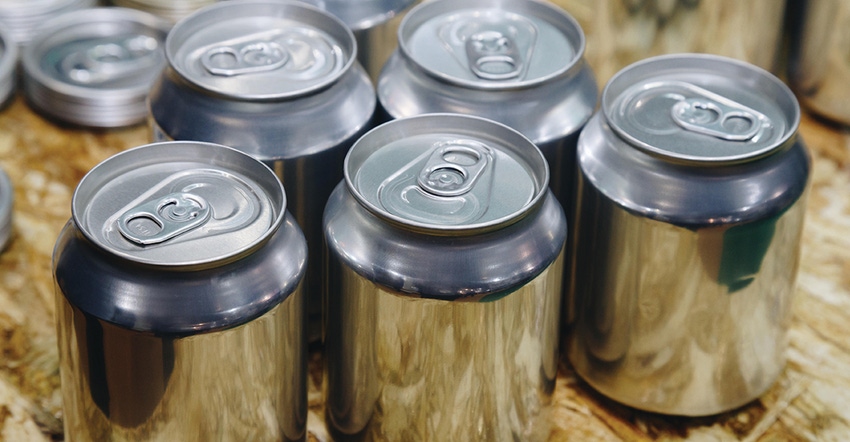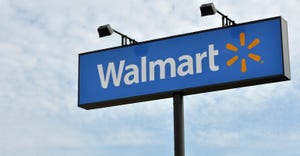Why is Aluminum Packaging Use on the Rise? Part 2
Aluminum beverage cans have been around since the 1960’s, though have fielded tough competition since the birth of plastic bottles and an ongoing fierce surge in plastic packaging production. But lately, more brands are switching to aluminum containers, and not just to hold drinks. This two-part series dives into aluminum’s sustainability story.

Aluminum beverage cans have been around since the 1960’s, though have fielded tough competition since the birth of plastic bottles and an ongoing fierce surge in plastic packaging production. But lately, more brands are switching to aluminum containers, and not just to hold drinks.
This two-part series dives into aluminum’s sustainability story. It tells what industries are turning to aluminum and why. Part 1 includes comments from ISRI, Ball Corporation, and others. In Part 2, Scott Breen, vice president of Sustainability, the Can Manufacturers Institute (CMI) and Matt Meenan, vice president of External Affairs, the Aluminum Association, detail the industry’s progress in cutting its carbon footprint and work to go further. And they respond to a McKinsey report that states plastic bottles’ overall greenhouse gas emissions (GHG) are significantly lower than that of aluminum beverage cans.
Waste 360: What are benefits of aluminum packaging from a sustainability perspective, and what drives these advantages?
Breen: Aluminum packaging has a good sustainability profile given that its carbon footprint continues to decrease and that the aluminum can be infinitely recycled.
Since 2005, the U.S. aluminum industry has reduced greenhouse gas emissions by 59 percent. Looking specifically at the aluminum beverage can, the North American carbon footprint has declined 41 percent since 2012. These reductions have been driven largely by decreased carbon intensity of primary aluminum production in North America, lighter cans (27% lighter per fluid ounce compared to 1991), and more efficient manufacturing operations. It also helps that the average aluminum beverage can manufactured in the United States contains 73 percent recycled content. Making an aluminum beverage can solely from recycled content entails 80 percent less emissions than making one from primary aluminum.
Its infinite recyclability, combined with that most households have access to a recycling program that accepts all aluminum packaging given its relatively high economic value, light weight, and ease of separation, is why aluminum packaging has high recycling rates and why 75 percent of all aluminum ever produced is still in circulation.
Waste360: How much is being recycled?
Breen: In 2020, 45 percent of aluminum beverage cans were recycled in the United States. That translates into 46.7 billion cans, or nearly 90,000 cans recycled every minute. Put another way, 11 12-packs of aluminum beverage cans per American were recycled in the United States in 2020.
Waste360: What’s going on with aluminum packaging in the beverage industry as well as in household products packaging?
Breen: As consumers demand packaging that is more sustainable, which starts with working in today’s recycling system, more beverages are shifting to aluminum beverage cans. One way to see that is in the growth of North American beverage launches in aluminum beverage cans. In 2018, it was 69 percent. It shot up to 81 percent in 2021.
There are also household products looking to aluminum packaging to offer a package that’s accepted for recycling in more communities and that has a more premium perception. Consider the article from the Grove Collaborative titled “14 Best Products for Shifting from Plastic to Aluminum.” Some of the products in that article are refillable aluminum bottles. Refillable models like Loop are turning to aluminum to provide sturdy packaging that can meet their needs.
Waste360: What sectors and specific businesses are leading the way in switching to aluminum from plastic?
Breen: Can Manufacturers Institute maintains a list of who has banned the sale or use of plastic PET bottles. It’s a diverse group including stadiums/venues, governments at all levels, airports, universities, companies, and hotels. The full list can be viewed at cancentral.com/PETbantracker.
Here's some specific examples of switches:
The University SUNY New Paltz in 2020 negotiated with its beverage vendor to have its vending machines go from offering drinks in plastic bottles to only offering them in aluminum cans.
Danone, Coca-Cola, and Pepsi are starting to offer some of their water brands in cans.
A variety of craft brewers have switched from bottles to cans such as Lakefront Brewery, Anderson Valley Brewing Company, and Alley Kat Brewing.
Waste360: What is the aluminum packaging industry doing to be more sustainable?
Breen: One activity that the aluminum beverage can industry came together last year to do is the Global Aluminium Can Sustainability Summit. This Summit joined more than 100 leaders across the global aluminum beverage can value chain with a focus on decarbonization of aluminum production and global standardization of measuring recycled content.
One of the topics of discussion at the Summit was an aluminum sector transition strategy that details how the industry can deliver net zero by 2050 and comply with the target of limiting global warming to 1.5 degree Celsius above preindustrial levels.
Waste360: What are some specific goals of the aluminum packaging industry?
Breen: On the aluminum beverage can front, aluminum can sheet producers and beverage can manufacturers that are CMI members collectively set in late 2021 U.S. aluminum beverage can recycling rate targets. These include going from a 45 percent recycling rate in 2020 to a 70 percent recycling rate in 2030.
CMI then published in mid-2022 its Aluminum Beverage Can Recycling Primer and Roadmap, which details how these targets will be achieved. Importantly, CMI is clear that these targets will not be achieved without new, well-designed recycling refund (i.e., beverage container deposit return systems). Modeling featured in the report finds that a well-designed, national recycling refund system could increase the U.S. aluminum beverage can recycling rate 48 percentage points.
The aerosol can industry has come together to support a joint initiative between CMI and the Household and Commercial Products Association. It has two 2030 goals. One is to increase the recycling access rate (i.e., percent of households with a recycling program that accept the packaging) of aerosol cans to 85 percent by 2030. The other is to label at least 90 percent of all aerosols as recyclable with messaging on how to properly recycle them.
Waste360: A recent McKinsey report states that aluminum containers have higher overall GHG emissions than plastic containers due to their weight and production-related emissions. In a comparison to PET bottles, specifically, McKinsey states aluminum has twice the emissions. Can you speak on this?
Meenan: Over the years, numerous third parties have conducted independent studies comparing the relative greenhouse gas impact of aluminum cans, PET (plastic), and glass bottles. In virtually every case, these studies found that the life cycle carbon impact of aluminum beverage cans is similar if not superior to PET (on a per ounce basis), and in every case superior to glass.
Furthermore, virtually all of these studies found that aluminum cans outperform PET (and glass) in terms of energy usage.
We believe that the recent comparative study conducted by Sphera and sponsored by Ball Corporation is the closest reflection of the current carbon footprint of aluminum cans and PET bottles. You will see on the illustration titled “Global Warming Potential (Carbon Footprint) C02/gallon” that aluminum cans outperform PET for carbonated beverages, but PET has a lower carbon impact for non-carbonated beverages. This is likely because non-carbonated beverages do not require as much plastic as carbonated beverages.
We are aware of the McKinsey study and noted significant data issues. For example, it does not use the latest carbon footprint data for aluminum beverage cans published by the Aluminum Association in 2021.
However, it is difficult for us to comment on the report in greater detail without more data and methodology as required by ISO standards for making comparative environmental/carbon footprint claims.
Carbon accounting and life cycle assessment is a complex topic, and any number of methodological factors and data assumptions can impact the outcome of a study. But, again, in general, comparative studies find that aluminum beverage cans perform similarly to PET in terms of life cycle carbon emissions.
Waste360: What progress has been made in improving the carbon footprint of aluminum beverage cans/packaging?
Meenan: In addition to the reductions in carbon footprint I pointed out, the aluminum industry continues to make progress on upstream emissions through efficiency improvement, technology development like inert anode technology, increased low-carbon electricity use, and efforts to increase end-of-life product recycling.
About the Author(s)
You May Also Like




